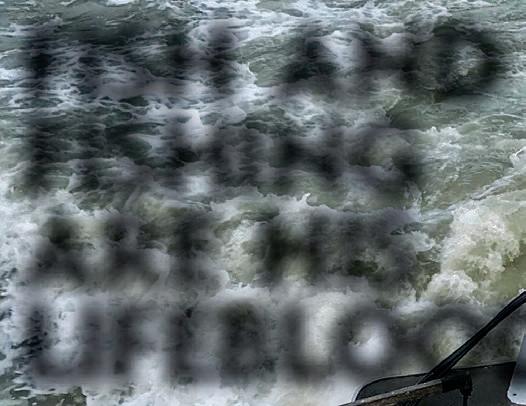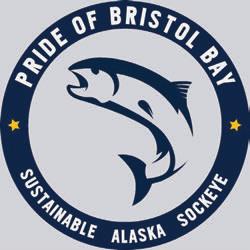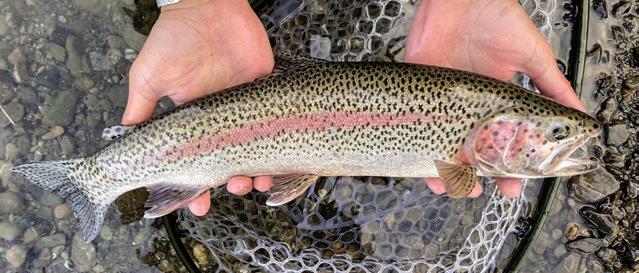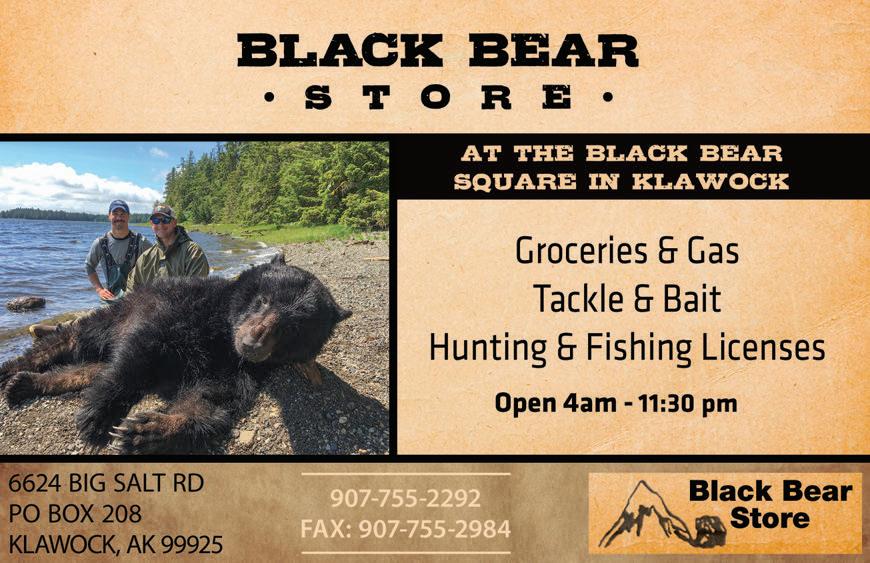
8 minute read
A FISHERMAN’S LEGACY
FISH AND FISHING ARE HIS LIFEBLOOD

Triston Chaney, a Yupik and Athabaskan fisherman from Dilingham, has been on salmon boats since he was 9 years old. It’s a family tradition he wants to uphold. (TRISTON CHANEY)

A YUPIK FISHERMEN REFLECTS ON HOW BRISTOL BAY’S BOUNTY GIVES HIM PURPOSE
BY BJORN DIHLE

Triston Chaney, a Yupik and Athabaskan resident of Dillingham, began fishing on his grandpa’s gillnetter in Bristol Bay when he was 9 years old.
Chaney was too young to be on the deck picking salmon from the net, so his grandpa had him count fish as they came aboard. The two have been fishing together every season since.
Chaney is now 21 years old, and commercial fishing is only one aspect of his relationship with salmon. His dad taught him how to fly fish when he was young, and he fell in love with the sport early in high school.
Before the commercial fishing season, Chaney and his family put out a beach set-net to gather food for the year to come. First, they target kings, then sockeye. Triston’s grandma splits the fish and the family helps hang them in the smokehouse.
“When the salmon are running, we can catch all we want pretty quickly. We keep what we need and then share the rest with some of the old timers and people not as fortunate as us,” Chaney said over the phone when he was taking a break from mending nets and getting
his grandpa’s boat ready for the 2020 sockeye season.
Sockeye salmon are commonly called “reds” due to the color their skin turns shortly before they spawn. The flesh of sockeye is also the reddest of all species of salmon, and its high oil content and delicious taste makes it many folks’ favorite fish to eat. More than that, though, sockeye are a living metaphor in telling of a connection to the people of Bristol Bay that goes back beyond memory.
Sometimes, when the sockeye spawn in the clear water of lakes, rivers and streams, they look like blood moving through veins made of water.
“Everything revolves around fish here,” Chaney said.
CHANEY IS TIED TO his family and the land in a way that is becoming more rare in our ever increasingly industrialized world. His first memories are of hunting “spruce chickens” – spruce grouse – with his grandpa. From his beginning he was harvesting wild food that he would share with family and others in his community.
During the fall and winter, he studies diesel/heavy duty mechanics at the University of Alaska Southeast. After he graduates, he plans to live in Bristol Bay year-round and do what he loves most: fish.
Chaney’s favorite fish to eat is king salmon, especially the smoked bellies, though sockeye comes in a close second. His favorite fish overall is the grayling. His favorite fish to catch is a rainbow trout while using a mouse fly.
“A rainbow will demolish a mouse fly,” Chaney said, reflecting on his love of fly fishing. “So much goes into fly fishing. It’s all about the intricacies. The choices.

Chaney loves to catch Bristol Bay-area rainbows. His father taught him how to fly fish at a young age, and he really took to the sport in high school. (TRISTON CHANEY)


The cast. The fight is better on a fly rod.”
Last year, after the commercial sockeye season, Chaney began guiding visiting anglers for Bear Trail Lodge in King Salmon, a community on the east side of Bristol Bay, about 50 miles from Dillingham. King Salmon attracts multitudes of visitors who want to experience the region’s incredible fishing, bear viewing and hunting opportunities. For many of his clients, Bristol Bay represents the fulfillment of the Alaskan


Joining his brother on the family’s setnet boat, Chaney understands how critical the Bristol Bay ecosystem is to his family’s livelihood. “Everything revolves around fish here,” he says. (TRISTON CHANEY)

dream. Whether people want to watch brown bears or catch giant rainbows, it’s a special experience.
“There’s such a diversity of life here,” Chaney said, “It’s wild how many different species of fish you can catch in a day.”
CHANEY PLANS TO FURTHER his career guiding fly-fishing trips and to chase fish in his free time. For him, there’s no better place than his people’s homeland, and that’s a big reason he’s a vocal opponent to the Pebble Mine, a massive, openpit gold and copper mine, toxic waste dump and industrial complex proposed to be built near the headwaters of critical rivers draining into Bristol Bay.
“We don’t like Pebble. We don’t want it. They couldn’t have picked a worse spot to dig a big hole. This could damage our whole lives. Life here revolves around fish and if that went away …,” Chaney said, his voice trailing off into silence.
He has been to Washington D.C. twice to lobby against Pebble. Both times were nerve-wracking experiences. Chaney likened it to having to speak in front of a large group of people but ten times more intense, “because the people you’re trying to show how bad the mine could be to the region can actually make a difference. I met a lot of cool people and learned a ton. I’m glad I did it and would do it again in a heartbeat to protect Bristol Bay.”
ON JUNE 16, CHANEY and his grandpa launched their boat in the Nushagak River to be ready when the sockeye fishery opened. The boatyards were bustling, though Bristol Bay fishermen face even more uncertainties than normal.
Chaney is concerned with low water in lakes, rivers and streams coupled with the forecast for a hot summer. Last summer the region, and much of Alaska, experienced similarly unusual patterns, and there was a massive die-off of fish that were “cooked” by how warm the water became. Chaney and other fishermen noted the tide rips were full of unspawned dead salmon.
There’s also the COVID-19 pandemic. Fish process workers, vital to Bristol Bay’s $1.5 billion fishery, live and work in close quarters that make them more susceptible to contracting the virus.
And then there’s the Pebble Mine, which is on track to be permitted – against scientific findings and against the will of the majority of Alaskans – right in the middle of the commercial fishing season.
One thing’s for sure, though: Come rain, shine or whatever fate has in store, Chaney will be fishing. He hopes to guide fly fishermen for Bear Trail Lodge after the commercial season. But if that doesn’t work out, Chaney didn’t have to think long about his alternative plans.
“I think I’d like to go on some sort of long fishing trip,” he said. ASJ
Editor’s note: Follow Tristan Chaney on Instagram at instagram.com/triston.chaney. Pride of Bristol Bay is a free column written by Bjorn Dihle and provided by its namesake, a fisherman direct seafood marketer that specializes in delivering the highest quality of sustainably caught wild salmon from Bristol Bay to your doorstep. For more information, visit prideofbristolbay.com.
LIGHTWEIGHT. The lightest 200-hp four stroke LIGHTWEIGHT. on the market The lightest 200-hp four stroke on the market POWERFUL. 2.8L displacement and Variable Camshaft POWERFUL. Timing give it the best power-to-weight ratio 2.8L displacement and Variable Camshaft of any 200-hp four stroke Timing give it the best power-to-weight ratio of any 200-hp four stroke COMPACT. Nearly 120 pounds lighter than our COMPACT. four-stroke V6 F200 Nearly 120 pounds lighter than our four-stroke V6 F200







THE ALL-NEW F200 IN-LINE FOUR. FORWARD THINKIN THE ALL-NEW F200 IN-LINE FOUR. FORWARD THINKIN G. G. Show the water who’s boss with the new F200 In-Line Four. Incredibly light, responsive and fuel efficient, it serves up plenty of muscle to handily propel a variety of boats. On top of that, its 50-amp alternator offers the power to add a range of electronics, and its 26-inch mounting centers and compatibility with either mechanical or digital controls give you the flexibility to easily upgrade your outboard or rigging. Experience legendary Yamaha reliability and the freedom of forward thinking, with the all-new F200 In-Line Four. Show the water who’s boss with the new F200 In-Line Four. Incredibly light, responsive and fuel efficient, it serves up plenty of muscle to handily propel a variety of boats. On top of that, its 50-amp alternator offers the power to add a range of electronics, and its 26-inch mounting centers and compatibility with either mechanical or digital controls give you the flexibility to easily upgrade your outboard or rigging. Experience legendary Yamaha reliability and the freedom of forward thinking, with the all-new F200 In-Line Four.
ALASKA
ANCHORAGE
Alaska Mining & Diving Supply
3222 Commericial Dr. (907) 277-1741 www.akmining.com
WASHINGTON
OLYMPIA
US Marine Sales & Service
3525 Pacific Ave. SE (360) 455-0788 www.usmarinesales.com PASCO
Northwest Marine and Sport
2250 Commercial Ave. (509) 545-5586 www.nwmarineandsport.com
YamahaOutboards.com/F200InLine Follow Yamaha on Facebook ® and Twitter ™ YamahaOutboards.com/F200InLine Follow Yamaha on Facebook ® and Twitter ™
REMEMBER to always observe all applicable boating laws. Never drink and drive. Dress properly with a USCG-approved personal REMEMBER to always observe all applicable boating laws. Never drink and drive. Dress properly with a USCG-approved personal









